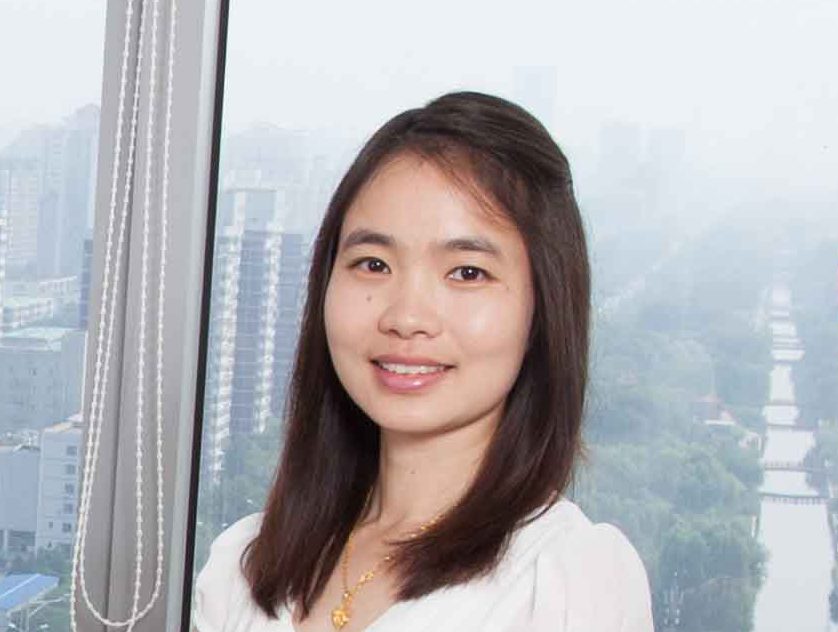
Fang Zhao: Working to prevent diabetes in China
Fang Zhao is a Research Assistant at The George Institute, China and a graduate from the school of public health at Peking University Health Science Center.
How long have you been working at The George Institute?
I joined The George Institute, China in June 2011, as an intern. 2 years later when I graduated with a master’s degree I became a full-time research assistant.
What attracted you to working at The George Institute?
When I was a first-year postgraduate student, a schoolmate of mine was working at The George Institute China office as an intern and said to me the institute was looking for more interns for their projects. That was how I started my career with The George. I love doing scientific research. After joining the institute, I was soon attracted to the friendly, professional as well as international working environment. My mentor was great too. He would allow me to carry out studies independently and provide me with sufficient guidance.
Also, the location of the office was preferable! It only takes me 20 mins by foot!
What are you currently working on?
I’m working on a study called DOSA2, funded by the Beijing Municipal Science & Technology Commission (BMSTC). This study aims to develop the clinical pathways for obstructive sleep apnea (OSA) screening, diagnosis and treatment among hospitalized patients with type 2 diabetes mellitus (T2DM) in Beijing. In the previous study DOSA, we found that among the hospitalized T2DM patients, the prevalence of OSA was about 60% while there were no guidelines nor clinical pathways for the diagnosis and treatment of this comorbidity. Therefore based on the DOSA study, we plan to carry out DOSA2 in 4 hospitals in Beijing. We aim to recruit 450 patients to develop a strategy and tool for OSA screening and diagnosis, then another 450 patients to validate the strategy/tool. We will propose a drafted clinical pathway reviewed by related experts, implement it in the participating hospitals, and review, revise and finalize it.
What difference will this make to healthcare and why?
The number of T2DM patients in China is huge. And we all know that there are lots of comorbidities with T2DM. OSA is one of these comorbidities and has a very high prevalence. According to the previous DOSA study, over 60% of them have OSA and 25% have moderate to severe OSA while only 1.5% in the real world have been diagnosed. OSA can cause sleep disorder and accidents related to daytime somnolence, and it is also an independent risk factor for hypertension and cerebrovascular disease, affecting the cardiovascular system. The work we are doing now, DOSA2 study, will help develop and optimize the clinical pathway for the diagnosis and treatment of OSA for in-patients with T2DM, and therefore provide better healthcare services to the patients.
What is your professional background?
I graduated with a bachelor degree in nursing at Peking University Health Science Center. Then I continued my postgraduate course in Social Medicine and Health Education at PUHSC. In 2013 I got my master’s.
Why do you enjoy working at The George Institute?
I truly believe that our work can improve people’s health and benefit the whole population. That’s what drives me to devote myself to research work and The George Institute is the place that can help me fulfil this dream. Besides I really enjoy the easy but at the same time professional environment. In addition, as a new mother, I find the Institute provides everything it can to make our life easier. There’s a well-prepared breastfeeding room for the new mothers in our office which I think is very considerate.
To explain to people what I do I say….
My job is about diabetes research, i.e., to prevent and manage diabetes among the population. To achieve that, we need to understand what the real problem is behind the scenes, and then to find out specific ways to address it. For example, to improve the healthcare performance in community healthcare sectors, we may consider mobile health technology as one of the most efficient methods; while for cases like OSA comorbidity among diabetes patients, we will focus on the development of optimizing the diagnosis and treatment, as well as clinical pathways.
To unwind at the end of the day I….
Go back home to my baby boy!
My first job was….
The George Institute is the starting point of my career.
My biggest achievement so far….
Of course it is my baby boy!

Fang Zhao and her son

